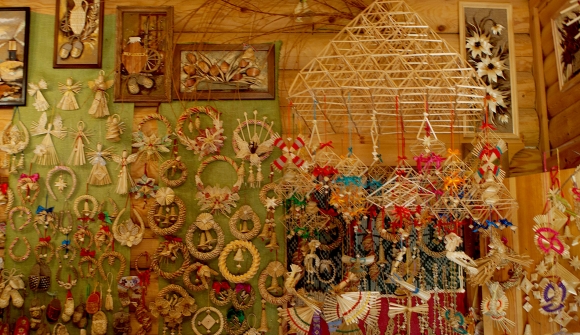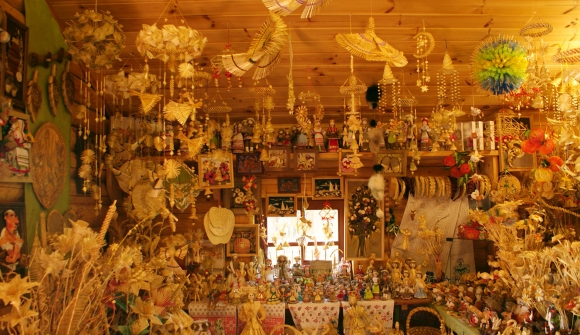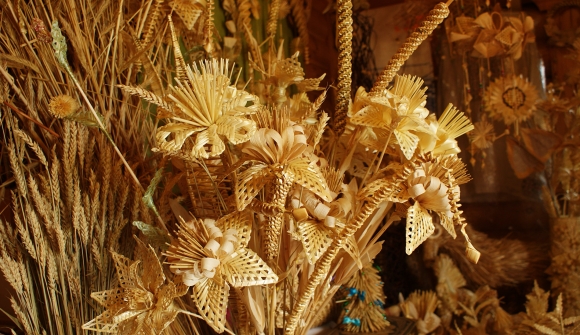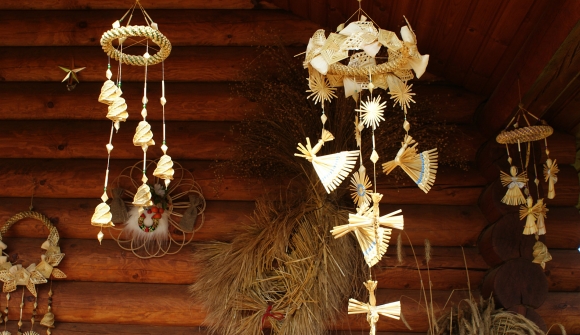Straw Weaving Workshop
Origins Straw weaving is one of the most ancient handicrafts. The researchers find imprints of straw articles on pieces of Ancient Egyptian crockery. In Belarus a straw weaving craft has been known for a long time. In the past people covered with straw the roofs houses, it was used as a bedding and a forage for domestic animals. Villagers used to make clothes and footwear from straw; they slept on it and during a lean year even add it in bread. Different household utensils, hats, toys and adornments were also made from straw.







Straw Weaving in Belarusian rites
Various figurines made from straw are not just toys but symbols of some divinities-protectors. Being a hero of many fairytales, a horse always accompanied a man and was his friend, adviser and protector; a goat in its turn was always a symbol of harvest and fruitfulness; a doll was a protector for women; birds represent our ancestors’ souls which protected those who are still alive. Keeping and decorating the first and the last sheaf was the most ancient and widespread tradition. People of different cultures across the world strongly believed in a spirit of harvest whose house was damaged by people at the time of harvesting; that is s why different items from straw such as wreaths or cages were created to temporarily substitute his damaged house. In Belarus such a function was performed by unreaped ears left on the field. Preparation of Material Rye straw is mainly used for weaving as it has the longest and the most durable stems among cereals. Wheat straw is suitable too but it is more rough, shorter and thicker compared to the rye straw. Oat straw which has beautiful yellow shade but is not long enough is used to make small details. Straw harvested manually is the best material for weaving but it should be harvested at different time so that it would have shades varying from green to bright yellow. Straw is dried, cleaned and soaked in hot water and after all it becomes more flexible and elastic. In the past craftsmen frequently used straw dyed with natural colorants. It was boiled in water together with onion peels to intensify its yellow color or with alder cones or oak bark which made it brown. Weaving Techniques There are three main weaving techniques. They are as follows: spiral weaving, straight weaving, flat weaving and three-dimensional weaving. Spiral weaving was the most widespread type. It was used to make boxes, containers for food and clothes, grains and flour as well as beehives and furniture. Straight and flat weaving was used to make work-pieces for straw hats, baskets, boxes, cases. Three-dimensional weaving used basically used to weave decorative items. At the end of the 18th c. and at the beginning of 19th c. this type of weaving was used to decorate interiors of churches. In the modest interior of village churches Royal Gates made from a simple straw material looked not worse than those gilded. The straw Royal Gates and weaved fragments of iconostasis recreated by researches on the basis of the preserved 18th c. patterns are kept in the museum church consecrated in honor of St. Prophet John the Baptist. They were made by Vera Soldatova. StrawInlay The earliest samples of the articles inlaid with straw date back to the 18th c. People used straw to decorate caskets, snuffboxes, Easter eggs. More often craftsmen prefer to use rye straw for inlay. It is cut in the shape of small squares, diamonds or stripes that are attached afterwards to the surface of a thing being decorated. The decorated surface is covered with lacquer in order to increase a contrast between straw patterns and a dark background. Straw Spider Hanging straw constructions called spiders are the most mysterious articles made from straw which were made specially by the day of winter solstice. According to the ancient beliefs, the spider with its web symbolizes our Creator and his creation, i.e. the Universe. Our ancestors believed that creative spider energy would influence the future harvest. That is why it was always made from the best reaped cones. A pyramid form is the most spread spider form. People say that under the canopy of straw pyramids one can feel unimaginable pacification. Spiders in the form of a ball symbolized the sun and were decorated with straw, paper, seeds and feathers. Usually the spider was put in the most honorable place in the house, i.e. above the table in the icon’s corner. It was spinning under the influence of warm steam rising from pots with hot food. In such a way beautiful unusual shades resembling spider’s web were created on the walls of a house. People believed this web could gather all the negative energy in it. On the day of vernal equinox the spider that served all the winter was burnt. |
|
+ 375 17 133-07-47
Phone/Fax |
+ 375 29 602-52-50
|
|
+ 375 17 132-11-77
Phone/Fax |
+ 375 29 603-52-50
|
| Download Particulars | info@dudutki.by |
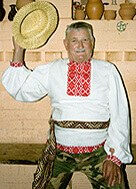
|
We invite you to visit us
on Friday till Sunday
Monday till Thursday are a day off
|
|
Mo-Th: days off
Fr-Sun: 1000 - 1800 (enter till 1700)
Dogs are not allowed
|


